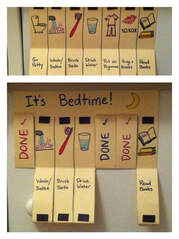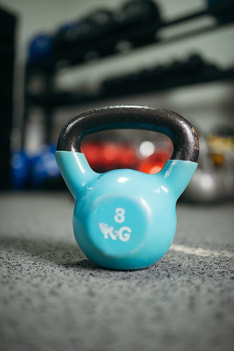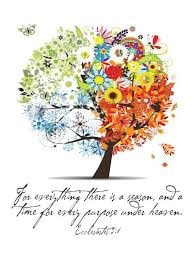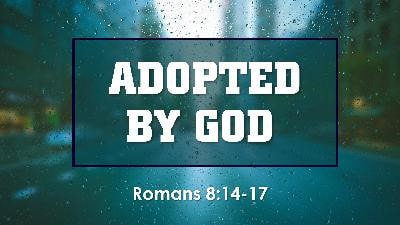 This month, I plan to continue to highlight the EBP of ‘modeling’. This is part 2 of a series so feel free to look back at last months’ article that helps to introduce the strategy as most of the introductory information is in that article. In a nutshell, this is simply intentionally showing a learner what we would like them to know or do. I will be delving into more detail, highlighting more examples and hopefully show you how this EBP can be a tool you can utilize, especially when introducing a brand new skill. As usual, modeling can be used in conjunction with other EBPs that we have highlighted in the past, as one piece of a larger puzzle. Note: Much of the information in this article is from the related AFIRM online module (link below). A simple mantra I like to use in many areas of my life, especially when setting a new goal/target behavior is “I do, We do, You do.” This is connected to the EBP of modelling in that the first few times (as needed), the learner can simply actively (or passively) observe someone purposely modelling the goal/new skill/behavior. This greatly helps with any anxiety that the learner may experience when related to gaining a new skill or even heading into a new experience. There is very little pressure or expectation on the learner when just having to basically watch. Other strategies or supports can help to move to the ‘we do’ and then independently ‘You do’ stage. The timeline on this will vary from person to person. One important point in this explanation is that it is key to move forward as soon as you can. Do not stay in the modelling stage. Let the learner move past that and begin to take their own steps in attempting the skill. For example, when teaching my son to cook, we accessed some visual recipes that are simple and broken down into visual step by step instructions. For the first three times when making the recipe, I had him simply watch me follow the recipe and I tried to talk my thinking through and showed him what each step looked like. Once we both agreed there were parts that he could take on (started with the simple ones (ex: pouring the rice into the water) and then moving to more complex (using a knife)), he slowly started taking over until he was ready to just have me watch while he worked through it all start to finish. There are now certain recipes that I can trust him to fully complete the recipe from start to finish totally independently! I do, we do, you do. What do you do to technically get started? It is the same for each EBP actually. First, identify the skill or behavior that you wish to have the learner learn or do. Then, try to collect ‘baseline data’, which basically means how well they can do the skill with no support at the beginning of the process. Once you have that, establish a goal that you eventually want to achieve. For example, if you wanted the learner to call and make an appointment for a haircut, you could write out a short script and then model how to read/use the script and record the appointment date and time in the calendar. Have them try on their own without the support to see the level of ability in the beginning. Once that level is known, make the goal (share with the learner if possible) for them to us the phone number to independently (with the script at first) call the hairdresser and make an appointment successfully. Then you get to the work of doing each step of the process while they actively watch you doing it. You can do step by step and have them watch that portion closely or do the entire process over and over until the learner is able to take over the portion they are comfortable doing. Look for part three of the modeling article for even more information on this ‘power tool’ for your proverbial ‘tool kit’ of what is proven to work. I will further delve into the prerequisites for the learner for this to be even more effective. If you are interested in checking out the free online AFIRM modules, here is the link (will take you to the social narrative module in particular as I am highlighting this here). https://afirm.fpg.unc.edu/node/589
0 Comments
 As you may have noticed, I have been writing a regular column highlighting one of the 28 evidence-based practices (EBPs), otherwise known as ‘things are have a lot of proof behind them that they really work’ in helping people with autism (Steinbrenner, 2020). This is a recently updated list from Wong’s earlier work (2016) outlining 27 EBPs. As an educator involved in the field of inclusive education and as a parent working to support my own kiddo, I am all about finding what really works and excited when new developments like this occur. Each month, I plan to highlight one of these 28 EBPs for you. This month, I plan to highlight the EBP of ‘modeling’. This has nothing to do with catwalks and designer clothes, of course, but more to do with intentionally showing a learner what we would like them to know or do. We will be highlighting the background, details, highlight some examples and hopefully show you how this EBP can be a tool you can utilize often. As usual, modeling can be used in conjunction with other EBPs that we have highlighted in the past, as one piece of a larger puzzle. In fact, research shows that modeling is most effective when used with prompting and re-enforcement (reference past articles for more specific information on either or both of these EBPs if you are interested). Note: Much of the information in this article is from the related AFIRM online module (link below). Modeling is the demonstration of the target skill or behavior before the learner is expected to demonstrate it. It involves the learner actively observing someone correctly performing that target skill/behavior. Modeling is usually used to increase a target behavior. Simply put, it is clearly showing the learner exactly what is expected to achieve the goal (before it is about to be performed). Note: Try to model the skill/behavior as close to the learner trying or doing it. Have as little time as possible between modeling and the performance of the task to ensure it is fresh in their mind (especially if there are multiple steps). For those into technical jargon, we call that ‘priming’: getting the person all ready to perform successfully. For example, if the learner was starting a new job and didn’t know how to clock in, instead of simply telling them, one could act it step by step while the learner was paying close attention. This is an active way to also ensure that success is more likely to occur the first time. If a learner was going to begin loading the dishwasher, watching someone model what is expected first and then having them do it themselves right afterwards is a great example of using this EBP. Modeling could also be used to increase social skills as an appropriate greeting or lunch time banter could be demonstrated right before the learner enters the social situation. This gives them more of an idea of what it ‘looks like’ and ‘sounds like’ than just having it to be an expected skill. Academic skills can also be targeted with modeling as we can show what is expected beforehand. For example, showing long division step by step (include a visual with the steps for future attempts if needed) while the learner simply observes is less stressful (for all involved) and therefore the information may ‘stick better’ too. To make it even more powerful, model, prompt and/or use a re-enforcer for a higher chance of success. One neat point is to provide a re-enforcer to ensure that the learner is really paying attention to the person modeling the skill/behavior. They may not be that interested at first and may not find it very motivating to pay attention to the demonstration. Find positive ways to ensure they are watching and are invested in the process! Learning anything new can be daunting and challenging so this can just be a very helpful and simple support. Modeling may seem very obvious but there are many times I realized I have just assumed a skill was known or I rambled off too many verbal directions and the chance of success was slim to none. It may take a bit more time and effort but the small investment may pay off with huge dividends. By always modeling before the skill or behavior is expected, it helps the learner avoid frustrating errors. This helps to build both confidence and skill at the same time: a total win/win! When acquiring a new skill, providing a chance to initially learn and practice in an ‘errorless environment’ is a very positive way to get momentum. (Providing an errorless environment is when you try to ensure that all of the things that could go wrong, do NOT go wrong and that success is almost a guarantee.) I know for myself, if someone has specifically shown me something I will try for the first time, step by step, I am much more likely to at least attempt it. Why do you think ‘how-to’ YouTube videos are so wildly popular? Because they work! If you are interested in checking out the free online AFIRM modules, here is the link (will take you to the social narrative module in particular as I am highlighting this here). https://afirm.fpg.unc.edu/node/589 As you may have noticed, I have been writing a regular column highlighting one of the 27 evidence-based practices (EBPs), otherwise known as ‘things are have a lot of proof behind them that they really work’ in helping people with autism (Wong, 2016). There has been some exciting new developments in this area of study and that list has been very recently revised (2020) and now there are 28 EBPs! As an educator involved in the field of inclusive education and as a parent working to support my own kiddo, I am all about finding what really works and excited when new developments like this occur. Each month, I plan to highlight one of these (now) 28 EBPs for you.
This month, I will highlight the EBP of ‘self-management’. The AFIRM module related to this topic explains it this way: “Self-management involves systematizing self-regulation strategies so that individuals with ASD can learn these rules and norms to act appropriately in a certain situation. Self-management is highly generalizable, easily adaptable to many natural settings, and can be used for long periods of time without assistance from a teacher or practitioner.” In other words, it is a system set up to help discriminate between appropriate or inappropriate (expected vs unexpected) behaviors, accurately monitor one’s own behavior and then reward oneself for that appropriate/expected behavior (if needed). Choose a support needed to make a positive change, decide on the goal specifics, record your success and celebrate! I find this specific strategy to be very respectful for the user as most of the responsibility is in the users’ hands. It helps to build both independence and self-advocacy skills. Depending on the look and set-up, this strategy can be used from the very young to older people as well. I use self-management for many areas in my own life. These tools are an important tool in my own personal daily and long term successes. For instance, I keep track of personal health goals I have set for myself, check off my successes, and sometimes reward myself with something motivating to me. This lends to my mantra of “Good for all, critical for some”. What type of goals can be addressed through an effective self-management system? A wide variety of goals both at home, school, work or out in the community can be addressed. Some examples are:
How do we put it into practice?
Self-management can be a ‘stand alone’ strategy (as all the strategies can be) but this also works as an important piece of the plan with many parts. It can be connected to visuals (using a chart, checklist, recording device, etc.), reinforcers (providing that little extra incentive to begin a new path), prompting (providing those reminders (verbal or otherwise), and determining the function of the behavior (the why people do what they do). These pieces, all in conjunction can help to build a more independent and positive day! If you are interested in checking out the free online AFIRM modules, here is the link (will take you to the self-management module in particular as I am highlighting this here). https://afirm.fpg.unc.edu/self-management  As a parent and an educator, I have been told by various professional team members to try to ‘use visuals’. The first few times I heard it, it seemed like a great idea and I tried using one or two: a visual schedule of some sort being the proverbial initial go-to. Over the years, I secretly began to resent this ‘use visuals’ as it seemed everyone’s advice or direction for me no matter the situation and it began to lose its appeal. In fact, it made me feel that these professionals had no real idea of what we were actually living and that a visual seemed like a glib suggestion to a serious issue. This suddenly changed as I progressed through my autism graduate work and there was two solid weeks on what ‘use visuals’ actually meant or could mean for me both at home and work. It opened my eyes in a new way and hopefully if you are feeling as I was, this short article might give you some new insights. Firstly, the use of visuals is one of the 27 research based strategies (Wong, 2016) and has multiple purposes. It is important to know this is supported by years of current research as you begin to pick and choose your approaches in working with your child/student(s). Some key points I picked up were:
Visual schedules – these can be as simple or complex based on the need. These can really help with organization, time management, planning, reduce anxiety and more. Visual schedules can be used at home or school as simple as a visual showing: “next/then”, “first/next/last”, a step by step of quarter day, half day, or full day activities. Use words only, pictures only, or both depending on the literacy levels. It can also be a checklist of the order of activities (any age). Visual cues – these can be helpful at home and school as well. It can be as simple as: a teacher placing a small green dot on a students’ desk to indicate ‘get back to the task’ (avoiding the constant verbal reminders), a teacher wearing a special scarf while working with a small group to indicate they are not to be interrupted (unless an emergency), a visual timer showing how much time is left for a task, a conversation cue of ‘my turn/your turn cards’, a math page with grid lines and many more. Adults can put up small sticky notes with reminders to turn off the stove after cooking, a visual to remember to make an important call, or a note at work to remind them to lock the door at night if last one out. Visual boundaries – These are non verbal directions/reminders to stay in the expected areas. At school, the way the furniture is arranged can be a natural visual boundary that is helpful for all. Students may have their own special spot on a rug with a shape, a piece of tape, a small hula hoop, etc. An employer found a clever way to support his employee with autism by putting down painters tape on the floor to help him better navigate his workspace which greatly supported him and decreased anxiety. Visual supports can help with smoother transitions, increase predictability, reduce inappropriate behaviours, increase understanding, increase independence, decrease distractions, reduce self-injurious behaviours, and even increase social interaction. If any of these are goals and you have access to a professional team member, invite them to spend an hour or two going over possible visuals you may want to use. They can get you started on where to begin to look and survey the child’s environment(s) to see where any of the three types may be beneficial. Remember…visuals: not just a buzzword! Try to use concise, relevant words and terms on the visuals and when introducing them. If a child can read, try to use the written word (checklist, schedule, reminders, etc.) and if they cannot, use picture cues with (or without) the accompanying words. Other examples can be visual timers, first/then/next boards, choices of reinforcers, creative token boards utilizing the child’s interests (ex: a picture of a train and you fill in the wheels), social stories, sticky notes can be used with a few key ideas or concepts, tape on a table to designate work spaces, your hand with thumbs up or down, pictures to accompany text or vocabulary terms, labelling the environment, visuals for noise levels, visuals for ‘do not disturb’ (some teachers use a tap light (on/off) to indicate this), breaking up the task into smaller pieces or less questions on a page, highlighting the area of work on a page, providing grids for math, giving reference materials close by (100s chart, multiplication chart, spelling lists, passwords taped into devices, etc.), use of graphic organizers, etc. I could go on and on. I realized both the power and possibilities of the ‘use visuals’ advice. I have now witnessed multiple successes both personally and professionally with this research based strategy. Honestly, as it turns out, I also do a bit better with a visual reminder here and there. Some of this information was sourced from the AFIRM modules: free online mini courses highlighting these strategies. I highly recommend them all.  Did you know that there are only 27 evidence-based practices (EBPs), otherwise known as ‘things are have a lot of proof behind them that they really work’ in helping people with autism (Wong, 2016)? As an educator involved in the field of inclusive education and as a parent working to support my own kiddo, I am all about finding what really works. If you make the mistake of googling how to help people with autism, you will NOT have the time to wade through the millions of ideas and suggestions that will pop up. Each month, I plan to highlight one of these 27 EBPs for you. Last month, we delved into the use of visuals and this month we will look at the EBP of using exercise in a therapeutic way. Firstly, why use exercise as an intervention? Research proves it can help with:
Honestly, before I studied this in more depth, physical fitness was the only benefit I had considered on my own: the obvious mind/body connection, the endorphins improving mood, taking a stroll for a time out or break to decompress. It turned out to be so much more! Desired/appropriate behaviors to target might include:
When developing an exercise plan, it is important to ensure that a team has helped create an appropriate plan whether it be taking into consideration physical limitations, OT concerns, health needs in general, the person’s interests/abilities/strengths, access to equipment (home or community center/pool), hygiene considerations, choice, cost, etc. Once these are considered, it is time to make a plan! Will it be a single activity or series of activities? How long? How often? Develop a routine based on time and location and get started…. Teach the Learner the Routine
Reinforcement (reward, praise, celebration) may be necessary, especially in getting the participant fully involved or even feeling positive about the exercise. Let’s get real here...I may need a bit of an extra push or reason to get myself moving too! Aspects of the Routine that may require Reinforcement
Please remember this does NOT have to take place solely inside or at a gym environment but outside play/exercise has known benefits as well. Nature itself can have a positive impact. The more time we spend in a natural setting, the greater ability to focus and concentrate. Even 20 minutes of exercise on a tree-lined street can improve symptoms. Exposure to outdoor activities can help kids (or adults) recover from symptoms like attention fatigue and increase patience and impulse control. This strategy has the research behind it but also the common sense understanding that moving around makes most people feel better. The endorphins and other health benefits are generally understood, but typically, we do not make it our first ‘go-to’ idea. Speaking both professionally (seeing this work wonders for kiddos already in my schools) as well as personally (at home with my own child and even me), this is one strategy that can begin to make a difference much sooner than later. Try it out! Note: If you have more interest in the topic, this fifteen-minute documentary highlights an initiative in Saskatchewan that tried exercise as a strategy with great results (not directly autism related however): Brain Gain – short CBC documentary After the unexpected death of a parent in a small rural community school, a teacher found herself searching for ideas on how to manage the wave of grief that had just hit everyone in her tightly knit school community, including herself and all 13 of her students. Finding out there was no plan in place or resources ready to help, the teacher began to develop her own for her school, collecting ideas and items and reading until the middle of the night, how to help support those around her. She then made contact with one of the district inclusive learning coaches who provided a supply of children’s books and resources, and shared the teacher’s concerns about supporting the school community. With the thought “This should be everywhere, all of our teachers should have this within their reach and not have to wonder what to do next.” The teacher collected books, suggestions, practical information, art/writing opportunities, phone numbers, support ideas for the family, the students, as well as for herself for immediate use and for continued family support. This need was the impetus for the forming of the grief box, started in Peace Wapiti School Division 76, which has now spread throughout the entire division. Using the Box the first teacher and coach made as a model, the Inclusive Education Coaches gathered as a team to assemble and finalize the contents for the boxes that would be distributed through the district. Currently, there are two grief boxes in most PWSD 76 schools for staff to access at a moments’ notice.
Sadly, this initial incident was not the last tragedy to strike a classroom, school, or broader district community. As many of the district schools are located in smaller towns, hamlets, or colonies, the larger portion of the broader community often experiences the pain of grief. Large schools can feel the effects as well and needed the supports. Schools were sometimes dealing directly and indirectly with death/suicides, house fires, illness, divorce, incarcerations or other life situations that cause grief. All of these things can greatly affect the social/emotional fragility of all involved, especially if you are a child or teenager, making academics seem secondary. Our schools needed something concrete to begin to bridge that gap for our grieving school members/students. Since grief knowledge, resources and materials was a growing area of concern, based on the first teachers’ experience, different partners in the district began to look at creating a thoughtful resource box to provide a teacher some immediate and on-going support for the student(s) as needed. The inclusive education coaches dedicated much time and effort into the creation of the resource. The district school board was behind the effort completely. The boxes were jointly funded by the Comprehensive School Health and Wellness grant, local ATA, and discounts by local Michaels and STAPLES stores. This work was broad and intense but culminated in a beautiful resource, both aesthetically and functionally, for staff to use immediately as a need may arise, for pre-teaching and for on-going grief support. Each box (purposely described as a box as opposed to a ‘kit’) is in a uniquely attractive box with an attractive but muted design. Inside is an assortment of items specifically chosen to help soothe and comfort students from a variety of chosen resources. The grief boxes are comprehensively designed, including resources for:
Each box includes:
Although officially launched in December of 2017, during this school year, seven schools previously requested them (even partially finished) as student loss arose within the district. Teachers (and families) were grateful to have such a resource available to them in their own classroom. They could easily sign them out from the library and keep as long as necessary. Local school councils were grateful for this type of support for the students in the school as well. How has this resource been utilized by teachers in our district this year? In December before the Christmas break, a grade 2 classroom teacher guided her students through making a memory box to honor someone they grieved or someone who has been important to them. They took them home as part of their Christmas celebration. Students at another school created a display board based on the Grief Box book “The Tenth Good Thing About Barney” in memory of a Grade 3 classmate who died. One father at Parent Teacher Interviews thanked his son’s teacher for creating a “Memory Book” about his wife. He reported they sat on the couch together, read it and wept together. The grief boxes are a part of an overall focus on the social and emotional health of children in our schools. We continually strive to find ways to meet the needs of the whole child in order to bring them to a better place in order to succeed in the other facets of student life. As we look to support a child academically, we know that we may need to meet other needs before doing that effectively. By working in partnerships with others, sharing our stories and needs, we all grow both as professionals but also as people sharing life’s joys and struggles. It is in that journey, although sometimes hard and painful, we move together to help develop our students and school communities with understanding and compassion.  “For everything there is a season, and a time for every purpose under heaven” (Ecclesiastes 3:1). There is a season for each of us in our roles throughout our lifetime. After I had my baby, I remember a friend saying the days are long but the years are short. As a child, I remember my mother saying she couldn’t believe how fast time goes the older you got. The older I get, the more I see the wisdom in these words throughout different seasons of my life. Part of this current season includes seeing my parents begin to age. I begin to feel a sense of urgency to talk to them more often, twinged with some regret from the times that I took them for granted, was too busy to pick up the phone when they would call, or laugh at their lack of ‘tech skills’. I value every conversation a bit more. A lot more really. We know that one of the Ten Commandments is to honor our father and mother (Exodus 20:12). This is a key element of God’s instructions for us. I remember memorizing this for a religion test at school. These words have now become alive, have flesh on them, as I age and wish for time to now slow down so I can breathe in every experience now. As God’s children, we can ask Him to love us through these seasons and feel His grace, for every purpose under heaven. Can you ask Jesus to accompany you through your own season of life?  My 22nd wedding anniversary is coming up. We mark our time typically in the calendar year and rely on the anticipation and enjoyment of special events, special seasons and of course, anniversaries. Some of these anniversaries can be positive but some can be a reminder of sorrow or loss as well. I recently read that our physical bodies can ‘remember’ anniversaries even if we are not consciously aware. As we come up to the one year anniversary of the covid response, we may be feeling overly worn out, anxious, and overcome. We travel through life not knowing what the future may bring. I can plan and sometimes those come to fruition, but the older I get the more I see that God’s plan is, and always has been, THE plan. Jesus is accompanying us throughout our days, our weeks, our years and beyond. Jesus knows our ‘anniversaries’ of what has been. He walks beside us through the highs and lows of life: the celebrations (peaks) and the times of sorrow or despair (valleys). Technically, we only have the present. God has told us that He is the great “I AM” (Exodus 3:14). Not I was. Not I will be. He is here. Now. Beside us. Let God sit with you in your own valley if that is where you are. Let him rejoice with you on the peaks. Can you feel Him now?  Recently, two close friends of mine were able to adopt a child. There was so much that went into this process but the end result made all of the work worthwhile. What an honor it has been to be an active spectator witnessing the joy, excitement, commitment, and obvious immediate love and genuine acceptance I saw in this family. It was so pure and had a holy element to it. I not only saw the couple, but countless friends, family, extended family and parish community come to celebrate the gift that this child is and would be to their family. As I reflected on this one day, I was reminded of some scripture that speaks of us being God’s ‘adopted sons and daughters’ and the imagery made more sense to me now. We read in Ephesians Chapter 1 verse 5 that, “In love, He predestined us to be adopted as His through Jesus Christ, in accordance with His pleasure and will…Under this belief, we are all equals in the eyes of God and He has called us worthy.” We too, are adopted people, children of Abba Father. We are the ones who have, through no doing of our own, been accepted into the family of God, through our baptism. If we see the human excitement and celebration over this one child being adopted into a family, we cannot even fathom the joy by our Heavenly father when we ourselves were welcomed to His family. God’s word mentions this many times, but we are reminded in Matthew 18:5 that “Whoever receives one child in my name receives me.” As an ‘adopted child’ myself, I am grateful to be so loved in my family of God. |
Filter Posts by Topic
All
AuthorCarmen has been published in a variety of online and print articles. Writing is a passion and she strives to grow and share her message. |
Photos from shixart1985 (CC BY 2.0), JLaw45, Goat Tree Designs, osseous, wuestenigel, shixart1985

 RSS Feed
RSS Feed